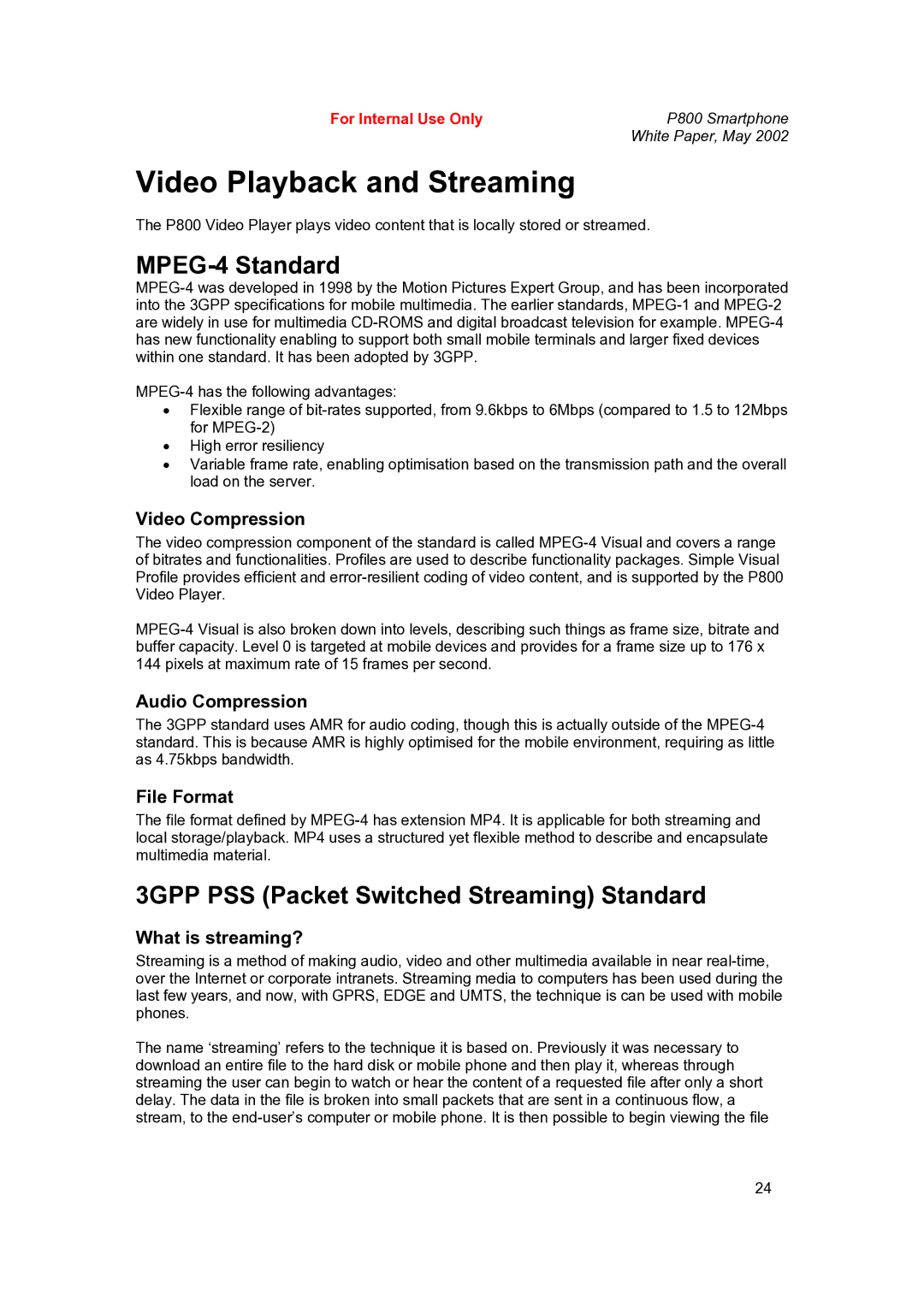For Internal Use Only | P800 Smartphone |
| White Paper, May 2002 |
Video Playback and Streaming
The P800 Video Player plays video content that is locally stored or streamed.
MPEG-4 Standard
MPEG-4 was developed in 1998 by the Motion Pictures Expert Group, and has been incorporated into the 3GPP specifications for mobile multimedia. The earlier standards, MPEG-1 and MPEG-2 are widely in use for multimedia CD-ROMS and digital broadcast television for example. MPEG-4 has new functionality enabling to support both small mobile terminals and larger fixed devices within one standard. It has been adopted by 3GPP.
MPEG-4 has the following advantages:
•Flexible range of bit-rates supported, from 9.6kbps to 6Mbps (compared to 1.5 to 12Mbps for MPEG-2)
•High error resiliency
•Variable frame rate, enabling optimisation based on the transmission path and the overall load on the server.
Video Compression
The video compression component of the standard is called MPEG-4 Visual and covers a range of bitrates and functionalities. Profiles are used to describe functionality packages. Simple Visual Profile provides efficient and error-resilient coding of video content, and is supported by the P800 Video Player.
MPEG-4 Visual is also broken down into levels, describing such things as frame size, bitrate and buffer capacity. Level 0 is targeted at mobile devices and provides for a frame size up to 176 x 144 pixels at maximum rate of 15 frames per second.
Audio Compression
The 3GPP standard uses AMR for audio coding, though this is actually outside of the MPEG-4 standard. This is because AMR is highly optimised for the mobile environment, requiring as little as 4.75kbps bandwidth.
File Format
The file format defined by MPEG-4 has extension MP4. It is applicable for both streaming and local storage/playback. MP4 uses a structured yet flexible method to describe and encapsulate multimedia material.
3GPP PSS (Packet Switched Streaming) Standard
What is streaming?
Streaming is a method of making audio, video and other multimedia available in near real-time, over the Internet or corporate intranets. Streaming media to computers has been used during the last few years, and now, with GPRS, EDGE and UMTS, the technique is can be used with mobile phones.
The name ‘streaming’ refers to the technique it is based on. Previously it was necessary to download an entire file to the hard disk or mobile phone and then play it, whereas through streaming the user can begin to watch or hear the content of a requested file after only a short delay. The data in the file is broken into small packets that are sent in a continuous flow, a stream, to the end-user’s computer or mobile phone. It is then possible to begin viewing the file
